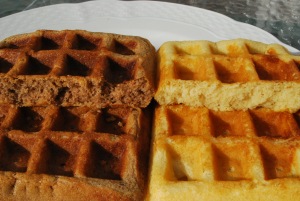
Last year at Christmastime we were very lucky to have my mom and sister come to Tucson to stay with us for the holiday. Usually, we have to travel SOMEwhere, since neither of our families live down here. Getting to stay home and celebrate with family was truly a treat!
We did all of the usual bustling and prepping. We had a beautiful tree and stocking stuffers. We planned a full menu and fun activities to keep us busy between meals. As part of a tradition we plucked from the West, we got a box of candies from See’s (there is no See’s in Chicago, where I grew up).
Yeah, about that box of candy…we waited. As long as we could. Then, on the day they were supposed to arrive we got a call – they would be late. Very late. The weather out on the road between Chicago and Tucson was not great.
We opened the box of candies.
Then, before we knew it, they were mostly gone. I know what you are thinking: are you kidding? I’m not. I think we ate them for lunch.
Dylan wanted to get more, especially the caramels. I looked at him straight on and said, “There is not chance, NONE, that I will be driving over to the See’s at the mall on the day before Christmas. Sorry.”
So we did what any resourceful people with time on their hands would do. We started searching the internet for a recipe so we could make them ourselves. (What would we ever do without the internet?)
We found this recipe on All Recipes and proceeded to completely butcher it. We didn’t’ have corn syrup and I think we were missing a few other things too. So, we improvised. The caramels turned out tasty, but didn’t have a very long shelf life.
This year, we decided to give the caramels another shot. I mean, why buy something that you can make yourself? Especially when you can be prepared and have all the ingredients!
Below I have copied the recipe from All Recipes. If you want to make more or less, I encourage you to visit the original, as you can adjust the number of servings you want and see customized ingredient quantities.
Caramels
- 2 c white sugar
- 1 c brown sugar
- 1 c light corn syrup
- 1 c evaporated milk
- 1 pint heavy whipping cream
- 1 c unsalted butter
- 1 1/4 t vanilla extract
Start by preparing the pan that you will cool the hot caramel in. This recipe calls for a 12×15″ pan, which I don’t have. I did some estimating and came up with two pans that yielded approximately 180 square inches of pan space (I multiplied 12 x 15 to get this number). In any case, line the bottom and two sides of whatever pan you use with parchment and grease well. Cooking spray works well for this.
Combine all of the ingredients except the vanilla in a large pot with high sides. I used my 5.5 qt soup pot and it worked perfectly. You probably don’t want something that is too tall, because you will need to  be able to get down in there to measure temperature/cooking stage of the candy.
be able to get down in there to measure temperature/cooking stage of the candy.
Turn the heat on low and stir all of your ingredients to incorporate them. Bring the mixture to a low simmer and keep it there. You don’t want to cook the caramel too quickly – you will just burn the sugar and never thicken the candy.
Ultimately you want to heat your mixture to approximately 250º. The temperature indicates how hard the caramels will be. You want to reach the medium-hard ball stage – you want the caramel to form a smooth yet tacky ball.

You can use a candy thermometer to achieve this, but I highly recommend that you also do some testing the old-fashioned way. To test the progress of your candy, drop a small amount into a cold glass of water. You’ll be able to see immediately if you are close to the right temperature (in the above picture, the glass contains the winner). Pour out the water and handle the little bit of candy. What you feel here will be the final texture of your caramel, so shoot for what you want 🙂
You’ll know you are getting close to the right temperature when the candy gets much thicker and gloppy (for lack of a better term). In the picture at the right, my caramel was at about 248º. It took over an hour and a half to reach this temperature. Be patient!
Once you reach the desired temperature, remove your pan from the heat source and stir in the vanilla.
Transfer your candy to the pan(s) you prepared and let the caramel cool completely. I stuck mine in the fridge after 10 minutes on the counter. You’ll need the caramel to firm up before you can do any chocolate dipping 🙂
As you can see from the photos, we chose to coat some of our caramels in dark chocolate. The little garnish you see on top is Chocolate Salt, which I won in a giveaway last month. Thanks to Katie from Salt and Chocolate for that extra special something!

Do you have a favorite candy at holiday time? What is it?





















 be able to get down in there to measure temperature/cooking stage of the candy.
be able to get down in there to measure temperature/cooking stage of the candy.









